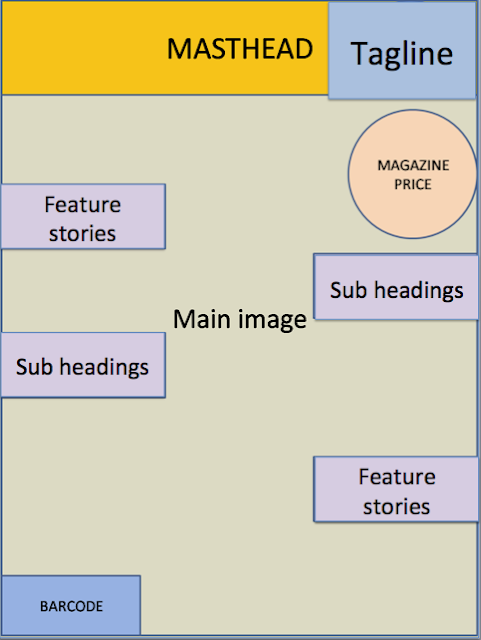Analysis of School Magazine

The
mast head of this magazine represents that the magazine is sold weekly and
there for is current and up to date. They have done this to make it more
memorable and to inform the audience that they can buy the magazine weekly
drawing the audience in. The masthead is located at the top of the centre of
the magazine which is a typical convention of a magazine cover. The masthead is
in the colour red, this makes the mast head stand out, this colour is also
linked with energy and passion which will mean the audience feels passionate
about the magazine. The main image is of a ‘student’ attending school; her
facial expression and body language shows she is enthusiastic about school and
makes the reader want to know why. This also makes the magazine look more attractive
because she is happy and smiling it makes the audience feel happy as well. The
bright colours used such as blue create a more energetic feel towards the
magazine which makes the audience feel calm and relaxed. From looking at many
magazine covers for this demographic audience I know they use bright colours,
as this makes it look attractive and stands out more. Also they have used the
colours blue and red which can show that the magazine is aimed towards both
genders. They have used a lot simple fonts; this gives the magazine a very
smart and appealing look towards it. The main pictures on the front our
outlined in bold making them stand out. The magazine also contains a barcode
which is a typical convention of a magazine cover.

The
mast head is simple and is shown to look as more or a slogan, this makes it
much more eye catching and makes this look more professional. The mast head is
placed at the top of the magazine cover which is a typical convention of a
magazine cover. The colours used for the mast head is red. This makes the mast
head stand out and also the colour is linked with energy, which makes the
audience feel energetic about the magazine. The magazine also features other
typical magazine conventions such as the issue date and number. This informs
the audience of the date the magazine is printed and how many issues have come
out. The colour scheme limey reflects the schools uniform colour, it is also a
good contrast between the faded red and white makes this more dominate. The
colours are consistent. Another typical convention they have included is tag
lines. This makes it look a lot more like a magazine cover, showing what it has
to offer for the readers and makes it more interesting for the reader which
makes it more eye catching. In the bottom
left hand corner they have a box filled with pages and what’s on them. This
makes it more appealing to the parents of the school children as they can see
it and find it straight away and therefore makes it more appealing. The main
image used is of 3 girls playing sports. Again this gives it an energetic feel
towards it. They are all smiling which shows that they are happy and having
fun, which conveys that they are a productive school and gives off a good
representation. However this magazine is missing the barcode which is a typical
convention of a magazine cover.

The
Masthead is titled ‘college’. This tells us that the magazine is based at a
college. The colour of the mast head is yellow, which represents happiness and
energy and therefore gives off a energetic and uplifting vibe to it. The head
mast is in a very simple font which is a typical convention of a magazine
cover. Again its placed at the top in the centre which is a typical convention.
The main image is of a typical college student carrying stereotypical school
books. the model is wearing black which represents power, which tells the
audience if you go to college you will be powerful and makes the magazine stand
out. The model is smiling which gives off a uplifting feel towards it. They use
3 simple colours throughout the magazine front cover, this is a typical
convention and makes it look professional. The fonts for the tag lines vary but
are kept consistent by making the main tag lines in bold or used in a slightly
different font but stay with the colour scheme. The magazine also features a
barcode which is a typical convention.












